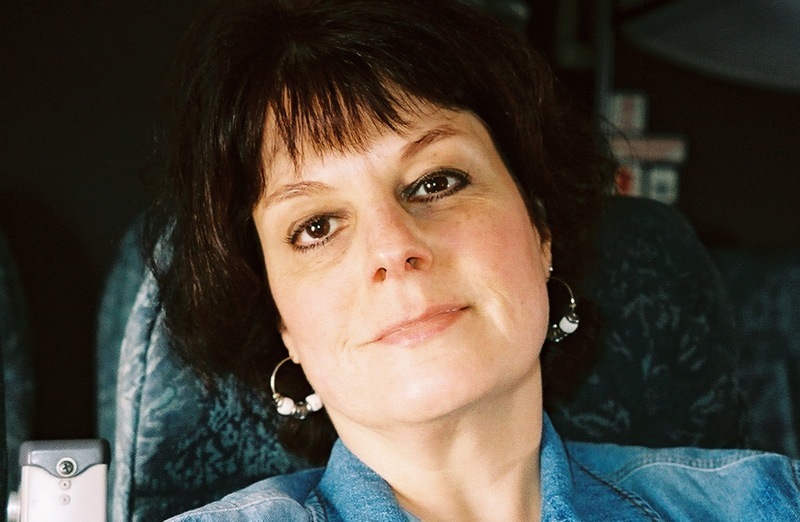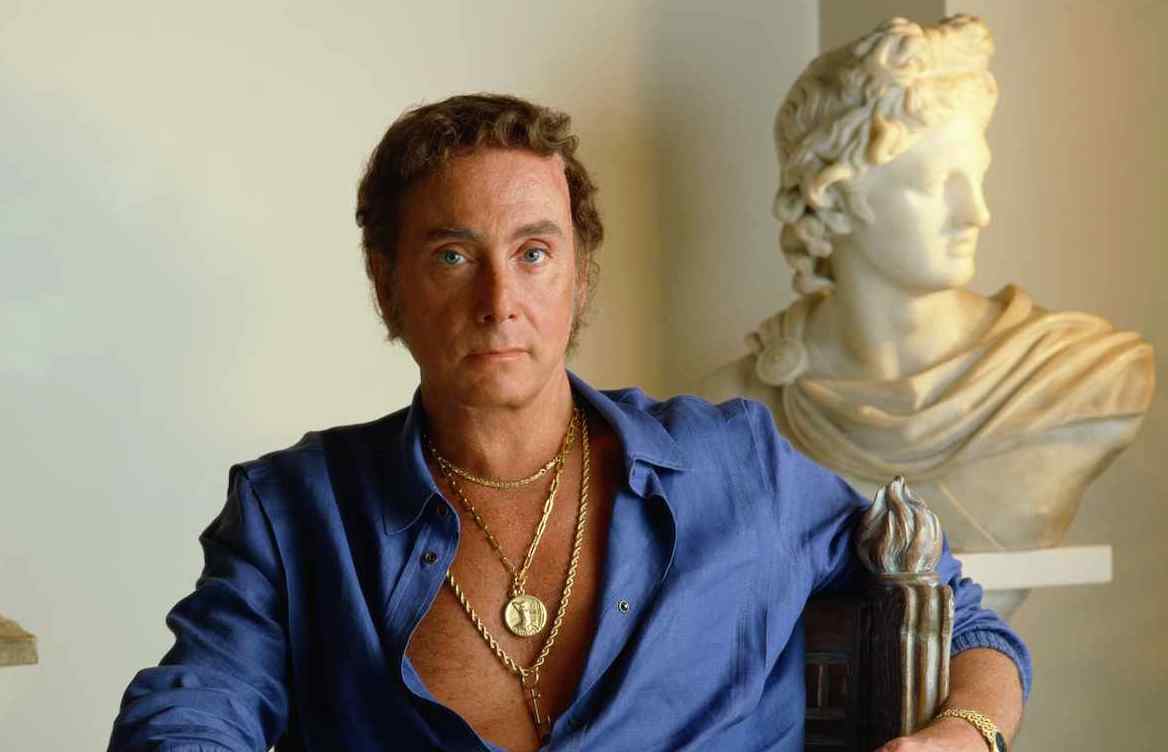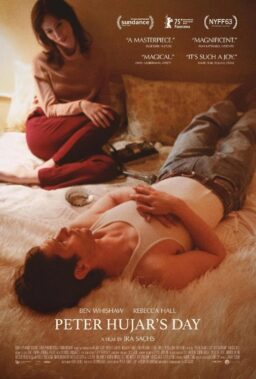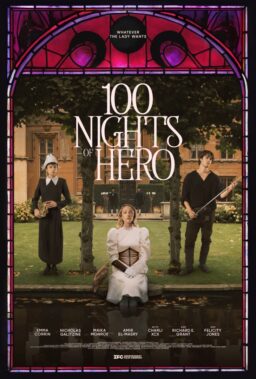Canadian filmmaker Barry Avrich has a thing for demythologizing entrepreneurs whose impact on culture was only exceeded by the size of their personalities.
His documentaries have dug into the psyches of super-agent and studio honcho Lew Wasserman (“The Last Mogul,” 2005), movie kingpin Harvey Weinstein (“Unauthorized: The Harvey Weinstein Story,” 2010) and Cineplex Odeon co-founder Garth Drabinsky (“Show Stopper: The Theatrical Life of Garth Drabinsky,” 2012).
Premiering on EPIX on Friday night is the film that Avrich, 50, says “completes my box set on moguls”: “Filthy Gorgeous: The Bob Guccione Story.” The decade-spanning portrait of the creator of the Penthouse empire attempts to peep beyond the gaudy gold chains, V-neck silk shirts and thick carpet of exposed chest hair that were the cornerstones of this skin-mag Caesar’s public image to reveal a self-made intellectual and recluse who prided himself on celebrating pursuits of the mind as well as the body.
Guccione, an Italian-American Jersey boy who introduced his brand of male fantasy to America in 1969 as a rival to Hugh Hefner’s Playboy, might be best known for crossing the bikini line photographically to confirm that most women who posed for sexy spreads did indeed have pubic hair.
But as the doc also points out, Guccione—a self-taught photographer who shot most of Penthouse‘s pictorials himself at his lavishly decorated New York townhouse—didn’t just objectify the female form. He regularly put women in editorial power seats at his businesses, including one-time exotic dancer Kathy Keeton—dubbed “the stripper with a brain”—who would eventually become his third wife and love of his life.
Where Hefner focused on promoting a swinging lifestyle during the sexual revolution with his smoking jacket, pipe and chain of members-only Playboy Clubs, Guccione invested much passion into taking stands on public issues in his pages such as censorship, the rights of Vietnam veterans, Watergate and his infamous campaign against the hypocrisy of Christian evangelicals in the ’80s. He also published Spin, an alternative-rock magazine, and the science -oriented Omni.
Bad investments including an Atlantic City casino and the rise of adult internet sites would force Guccione to file for bankruptcy and lose most of his holdings before he died from cancer at age 79. Avrich spoke about the Penthouse founder and his legacy while attending the Toronto International Film Festival in September, where he premiered both “Filthy Gorgeous” and a filmed memorial tribute to his friend, Roger Ebert, during the opening gala.
Did you grow up reading Penthouse?
It’s funny. Eight thousand interviews and no one has ever asked that. I discovered Penthouse in the basement of my uncle’s house. We would go for dinner once a week.
What age is this?
The age of 11. Everyone would come for dinner. I’d sneak downstairs to his basement with the red shag carpet and the black leather couch. And underneath that seat on the right were the magazines. Playboy and Penthouse. But primarily Penthouse. I knew enough at 11 that Penthouse was better. Not because the pictures were more explicit. The letters. The letters allowed even a young kid the imagination to create an experience. And I believed them. If I could order a pizza and a scantily clad woman was delivering my pizza and wants to stay and have sex with an 11-year-old, I’m in. That is how I discovered Penthouse.
You talk about the competition between Playboy and Penthouse. But you don’t mention Hustler or Larry Flynt.
I saw Larry Flynt as a carnival attraction. He’s probably the smarter businessman of the three. He didn’t want to be anything else. Ninety-two pages of the magazine in the back are merchandise that he controls and owns. He understood video. He understood technology. And basically this was a voyeuristic view inside a gynecologist’s office. He wasn’t looking for editorial. He was smart. I just didn’t consider him part of that world. Bob Guccione was interested in showcasing journalists, writers like Gore Vidal, Aldous Huxley and Alan Dershowitz.
What is the difference between a Playboy reader and a Penthouse reader?
I think it’s right in the title. Playboy is the guy who is out there. Wants to go out with a chick on his arm every night. He is living the Playboy life. Penthouse in Bob’s mind was about living in the penthouse. That is what he hoped the reader would be. The advertising, the Jaguars, the cognacs, the better writing. The photography was more artistic. In the beginning, he just wanted a better product and that is what Penthouse meant to me.

At a certain point during his heyday, Guccione became a larger-than-life character to be parodied.
He was a bit of a joke back then. “Saturday Night Live” did a skit with Dan Aykroyd as a Tom Snyder-like late-night interviewer and they had someone be a Bob Guccione guy (Randy Quaid, who was a cast regular in the mid-’80s). Because of the leather pants and the gold chains and the shirt opened to here. The way he talked, deep and throaty. Women loved that. He didn’t care like Hefner did about his own personal brand. He cared about Penthouse. And he was the largest employer of women in the magazine industry next to Ms.
Guccione probably trusted women more than men.
He did. There’s no question. You look at the senior management he had along the way. You look at the female editors that he had. Anna Wintour, Pat Adcroft, the editor of Omni. Very, very smart. Kathy Keeton opened up his eyes. She ran the business and was brilliant.
He really wanted to be an artist. His passion for photography grew out of his wanting to be a painter.
The camera became an extension of his paint brush. He was a really a good painter. He basically did reproductions of great works. But compared to other celebrity art by the Anthony Quinns and the Keith Richards…they are selling their paintings, but they really aren’t good. Bob’s work was derivative of the Masters, but looking at the brushstrokes and lighting—he was good. He painted over 300 works.
How were he and Hefner different?
Guccione was interested in what women thought and how women operated. Not only sexually, but what was going on in their mind and what made them beautiful. Hefner was interested in photographing them beautifully. And there is a difference. That was a huge difference between the two of them. Guccione didn’t go out at night. He wasn’t interested. Hefner had to be out and, still, at 87. Still in that smoking jacket and pipe.
And what was the difference between a Penthouse Pet vs. Playboy Playmate?
Huge. A Playboy Playmate or Playmate of the Year was airbrushed, it was cotton candy. You could almost see the gloss on the young lady’s skin from the page. The turn-ons and turn-offs list. It was all very controlled and beautiful. Bob’s view was, “I want these woman to look like art objects. I want them to look like paintings.” They were gauzy, they were more explicit. But they looked like frames of cinema. All of them. He took the time to build a set. He took the time to pose them like a Degas bather. He took the time to really work through it. I realize that is a tough sell in this film. You’re going to say, “Gee, you are trying to make this guy into a saint or what not.” He was more than just a pornographer. There was an artist there.

One thing I did not realize was when Penthouse decided to run those racy photos of Vanessa Williams that were taken before she became the first black Miss America in 1983, it backfired as a business decision. I just assumed it boosted Penthouse‘s popularity instead of becoming a PR nightmare.
That issue was the biggest circulation they ever had—8 million copies and $30 million in revenue for one magazine alone. But Guccione didn’t expect people to suddenly turn on him. Turns out Miss America was an institution like apple pie. Although you can’t name another Miss America .
It certainly helped raise Williams’ profile and led to a successful showbiz career.
She said that to me privately. She wouldn’t go on camera. But it gave her a huge career boost.
I am sure fans of RogerEbert.com will be glad you provide some insight on Guccione’s gift to terrible cinema, the 1979 hardcore-porn epic “Caligula.” I’ve had the opportunity talk to Peter O'Toole and Helen Mirren, who somehow were convinced to star in it. When I brought “Caligula” up, they each got a somewhat sheepish look on their faces and shrugged it off. In the documentary, Mirren describes “Caligula” as “an irresistible mix of art and genitals.”
And she laughs. She knows. I can’t believe John Gielgud was delivering a line, “And now we must walk through Rome and capture…” And then someone says cut and, “Let’s bring in a Great Dane to mount a woman.” I don’t think he knew about that.
Playboy lingers on and occasionally make headlines. But Penthouse—does it exist anymore.
It does. Penthouse still exists. It’s run by a huge internet porn company. I don’t think it makes any money. It’s irrelevant. The family lost it 10 years ago. It was brought out of bankruptcy by a Boca Raton company. It’s on the internet but you can get it on the newsstand, too. It sells maybe 50,000 copies. When it used to sell 5 million.
Why should we care about Bob Guccione now? I guess his influence has seeped into our culture but many born after 1980 or so might not even know his name.
If you look at “Fifty Shades of Grey” coming out as a movie, that eroticism is what Bob started. Men’s magazines were not erotic before Bob began. They were pinups, glossy stuff. There was no theater of the mind. If you look at films like “300” and the TV show “Spartacus,” it is all “Caligula” type stuff. I think you care because this is the man that gave you erotica. And yet was always curious about a whole lot of other things. He wasn’t just a one-dimensional pornographer.
Roger would probably like this movie. After reading his memoir, especially his chapter about working with Russell Meyer on “Beyond the Valley of the Dolls,” it is apparent that he liked his women on the buxom side.
I think he would have too. I miss him daily. He liked great storytelling. Guccione was a provocateur in his journalism and I think Ebert would have loved that.
How did you and Roger first meet?
It was at the Toronto film festival in 1988. Dusty Cohl (one of the founders of the event back in 1976) was my mentor. He said you got to pick a guy up at the Four Seasons and bring him for breakfast. I went, “I’m not a driver,” He said, “Just go pick the guy up at the Four Seasons.” I said, “Who is he?” “He’ll know you.” I pulled up at the old Four Seasons and Roger Ebert looked in and got in my car. And I drove him down to this infamous bagel breakfast that we would have every Saturday of the film festival and that’s how we became friends.”












